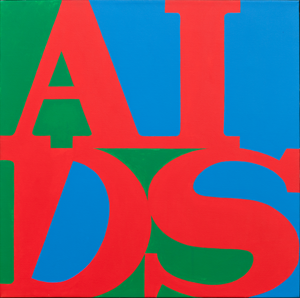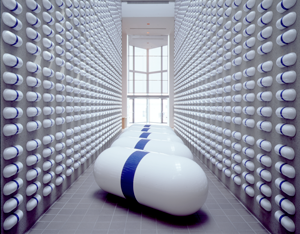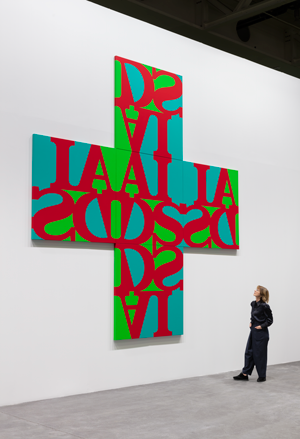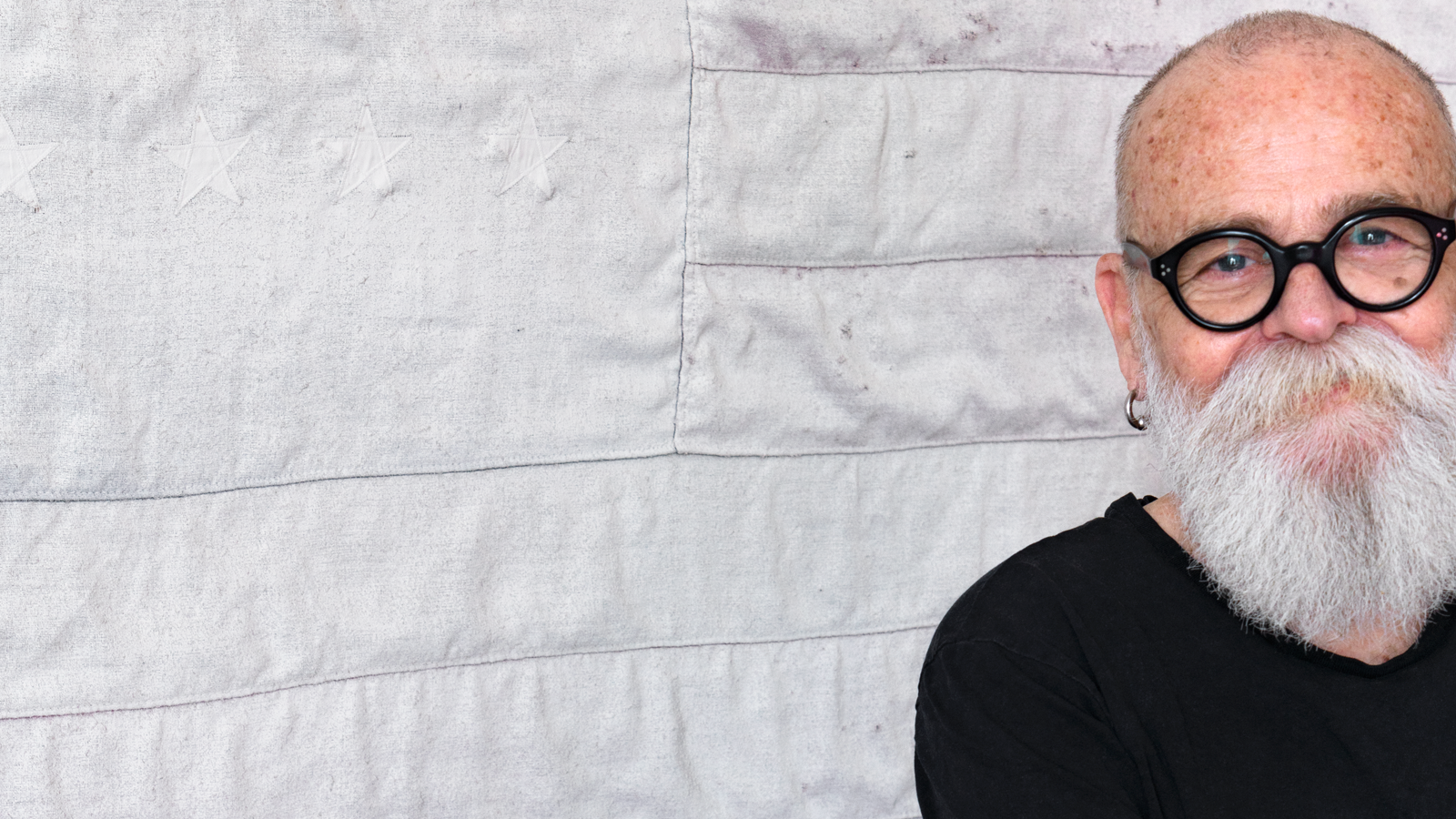Artist AA Bronson talks to Ryan Conrad about art and HIV.
AA Bronson photographed by Florian Hetz
General Idea (GI) was an artist collective made up of Felix Partz (1945–1994), Jorge Zontal (1944–1994) and AA Bronson (1946–). The group came together in the late 1960s amid Toronto’s countercultural arts scene and remained active until 1994. Together, they would go on to make much-celebrated queer visual art, performances and videos that have exhibited internationally. GI stopped producing work after Felix and Jorge died from AIDS-related illnesses in 1994, but their art continues to be shown internationally. From June to November this year, the National Gallery of Canada (NGC) in Ottawa is hosting an exhibition looking back at GI’s work. In the fall of 2021, queer artist and scholar Ryan Conrad interviewed AA Bronson about this upcoming show and the impact that HIV and AIDS has had on his work, both during and after GI. The following transcript of their conversation has been edited for length and clarity.
Ryan Conrad: I’m very curious to hear how the new GI retrospective at the NGC came to be.
AA Bronson: It was planned long ago by Diana Nemiroff and then cancelled when the leadership at the NGC changed. The NGC purchased their first work by GI in 1971 and I think that was the first work that GI ever sold, and they have acquired many key works since. But it’s taken 50 years for them to present a full GI exhibition. When former NGC director Marc Mayer had already announced his leaving date, he talked to me about doing a retrospective, which of course I was eager to do. I think it had gotten to the point of embarrassment that it hadn’t happened yet. It felt like it would eventually happen, but I was beginning to wonder if it would happen during my lifetime.
RC: You’ve spent much of your professional life as an artist outside of Canada. The NGC isn’t just any gallery, but a place that produces a sense of national identity and culture. What does it mean for GI’s work to be shown in this way?
AA: I’ve always been very loyal to the NGC. When I was in high school in Ottawa I would often take the bus downtown from my suburban home and go to the NGC. There was one exhibition in ’61 that affected me profoundly. It included people like Ad Reinhardt, Marisol and Warhol. That exhibition, and many other exhibitions that I saw there, influenced my thinking about art. GI did its own versions of Reinhardt’s black squares with our black-on-black AIDS paintings in the early ’90s. They’re nearly identical to the original black square paintings by Ad Reinhardt that I saw at the NGC. So my life as an artist has been kind of embedded in the NGC. When I was invited to do the retrospective, I happily said yes. The exhibition catalogue is designed to be the definitive GI catalogue, since no such publication exists yet.
RC: Can you talk us through some of the pieces in the exhibition that would be of particular interest to the HIV community?
AA: It’s difficult to do because more than half of our work isn’t really for the gallery. It’s for the street or public spaces, or it’s performance work for other venues. That immediately narrows what can be shown because so much of the AIDS work was in the public realm and on the street. We’ve tried to reflect that in the catalogue by putting in as much information about the non-gallery stuff as possible, like the AIDS posters in the New York subway system or our AIDS animation on the Spectacolor Board in Times Square, and AIDS posters on trams in Amsterdam and Seattle. We can’t show these in the gallery and they’re the main core of GI’s AIDS-themed work.

In June of ’87 we made our first “AIDS” painting for the first fundraising project for the American Foundation for AIDS Research. At the time we thought of it as a one-off painting based on the Robert Indiana “LOVE” painting. It got an enormous amount of attention and there was a lot of discussion of what it meant—it just said the word AIDS. By the fall of ’87 we decided to do a poster campaign on the streets of lower Manhattan with the same “AIDS” logo and in January of the following year we produced another poster campaign in San Francisco. Around ’89 to ’90, first Felix and then Jorge were diagnosed with AIDS. Suddenly our lives were full of pills. In a typical GI way, we decided to transform the pills into a part of our art making, and from then on there’s a whole series of pill installations. The installation One Year and One Day of AZT (1991) is owned by the NGC. There’s also a piece called Fin de siècle (1990), a term usually assigned to European art from the 1890s that fixated on death and morbidity. Fin de siècle is a gigantic ice floe of Styrofoam on which three stranded baby white harp seal pups sit. We made this as a self-portrait in the era of AIDS.
RC: From your description of GI’s HIV/AIDS-themed works, it’s clear you spent a lot of time in New York City. Were artists approaching HIV/AIDS differently in the United States versus Canada?
AA: Towards the end of Jorge’s and Felix’s lives we moved back to Toronto because they knew they were dying. I only came back to Toronto for five years and then I was gone again. Within that five years there was only one year of producing as much work as we could, and then four years of grieving. What many people don’t realize is that when we moved to New York I was 40 and when we did our first AIDS painting I was 41, and I was the youngest of the three. So those works were produced in our 40s, and if you look at the work on HIV/AIDS produced by other artists from the New York area, they were all in their 20s. We were very different generations.
GI had already done many museum shows around Europe and Canada. We were producing work for an international audience. We were operating within a context that did not necessarily have English as its primary language and where the issues were not necessarily the same issues that people in New York had. We were privileged in that we were showing internationally; we were travelling. But we had to come up with a kind of visual language that spoke to people internationally. Our idea was to say nothing, by creating a blank, in a way just the word AIDS is like a blank—it doesn’t say anything about anything. And what happens is that people project onto it the issues that they think are important. So how somebody in New York would see it versus how somebody in Cologne would see it was very different. There’s another reason our work was different from American artists, and this may sound like an excuse, but we were living in the United States illegally. We didn’t go to activist meetings and we didn’t take part in demonstrations, specifically because we didn’t want to be deported. We didn’t have social relationships with that crowd; we were much older. At the time there was criticism from their side, but we weren’t so much aware of it.
RC: The American artist/activist collective Gran Fury made their painting RIOT (1988) in response to GI’s AIDS (1987) painting. You must have been aware of that, right?
AA: That’s a little bit later, in ’88. The wonderful curator Frank Wagner organized an exhibition about AIDS in Berlin that included mainly American artists and GI. For the exhibition we made an iteration of the “AIDS” poster project, plastering our posters all over an unused but highly visible U-Bahn station. Wagner invited Gran Fury to be in the same show and that’s when they produced their RIOT painting, in the same format as our AIDS logo. In their minds it was a challenge to GI. We just thought it was a conversation and we thought that was great, but it was actually intended as a big put-down of our “AIDS” posters. Of course, the word “RIOT” only really applied in the American situation where rioting was definitely necessary; it didn’t apply in Germany.
RC: I want to shift gears to think about the ongoing AIDS crisis revisitation that has been taking place over the last decade. The NGC show follows many other exhibitions, films and memoirs that have focused on the early years of HIV/AIDS. What do you think about this period of revisitation we are in? Some people have critiqued how this is motivated by nostalgia. This argument was made popular through a project called PosterVirus, which is named as an homage to GI itself.
AA: I’m not familiar with it.
RC: PosterVirus was a project by AIDS Action Now! that used the strategy of creating multiples and pasting them in public, much like GI’s “AIDS” posters. It was Toronto-based, but the posters went everywhere. One of those posters from 2013 contained the phrase “Your Nostalgia is Killing Me.” It was referencing the revisitation of HIV/AIDS activism and aesthetics. The artists thought this was obscuring issues affecting people living with HIV in the present. What do you think it means to revisit historic works now?

AA: Revisiting is not necessarily nostalgia, so I’m not sure. I’ve had many people say to me words to the effect of “Why look at this AIDS work? The AIDS crisis is over. Nobody’s died of AIDS in decades.” And I say, well, you obviously haven’t visited the UNAIDS website recently, otherwise you’d see that 680,000 people died of AIDS last year. I see this as an opportunity for education. I think the issue of HIV/AIDS is now embedded in healthcare issues in general. To do work that is specifically about HIV/AIDS now is difficult without foregrounding class and race and all those other issues that are so embedded in it. It seems to me that the people who complain about it in that way almost always come from privileged white educated backgrounds and haven’t taken the trouble to notice that there’s an awful lot going on outside of their particular circumstances. I’m not sure whether I answered your question or not, but anybody who says the word “nostalgia” in relation to that time definitely was not there. It was just so scary.
RC: Today you describe yourself as many things, and “healer” is one of them. Could you talk about the direction of your work after GI?
AA: Jorge and Felix both died at home and I cared for them till the end. I had started taking courses at the Body Electric School in San Francisco on the subject of healing, including massage. I received 13 California certifications, but I never really used them except in my caring for Jorge and Felix. After they died, I found it very difficult to do anything, although I did complete the GI exhibitions that had been organized in advance. In ’98 I moved back to New York and around that time I took a refresher course at the Body Electric that gave me the self-confidence to claim the title of healer. Around that time BUTT magazine interviewed me about my healing practice and I was swamped with clients! But eventually I had to step back from the healing practice. By the time I moved to Berlin in 2013, I was getting older and just didn’t have the stamina or that eager American audience anymore. However, from 2013 to 2018 I produced a series of museum exhibitions loosely built around ideas of healing and community, in the Netherlands, Austria and Berlin, beginning with The Temptation of AA Bronson at Witte de With in Rotterdam.
RC: What has been your focus since then?
AA: Recently I’ve been producing huge AIDS paintings based on the enormous Robert Indiana LOVE Cross painting from 1967, in which LOVE logos are arranged in the shape of a cross. GI saw that painting in 1991 in Cologne and we wanted to make an AIDS version, but we didn’t have anywhere we could show it. I think of the AIDS Cross as a talisman against epidemics, against infection. I’m producing them now and while it’s like revisiting GI and completing works that were never completed, these are also new works.
RC: That’s interesting, thinking about it as finishing work that never had the chance to be done previously through GI.

AA: I figure I’ll let the history books decide whether it’s work by me or work by GI. The NGC attributes them to me and GI, which I think is probably the correct way to go. But these new paintings come out of this COVID time. People suggest to me that I should be doing work about COVID but people don’t realize how tough that AIDS crisis was. COVID is nothing in comparison. Deadly as COVID is, and as much pain and suffering as it’s caused, it’s a very different situation. The vaccines were developed amazingly quickly, and the healthcare system has really been on top of it. So, I thought I’d rather just continue with the same work about pandemics and about crisis.
RC: I agree that the quick comparisons being made between HIV and COVID aren’t very helpful. They are very different pandemics with very different circumstances.
AA: Also, in Canada we had another pandemic with SARS in between, which the United States doesn’t really acknowledge as ever having existed. We made it through that one too, but there’s going to be more epidemics. With climate change and the collapse of biological systems there’s going to be more and more epidemics and medical disasters. Viral emergencies or however you want to think of it. I think my work is more about that these days.
Ryan Conrad is an artist, educator, and activist living in the Ottawa Valley. Read about his work at www.faggotz.org.

